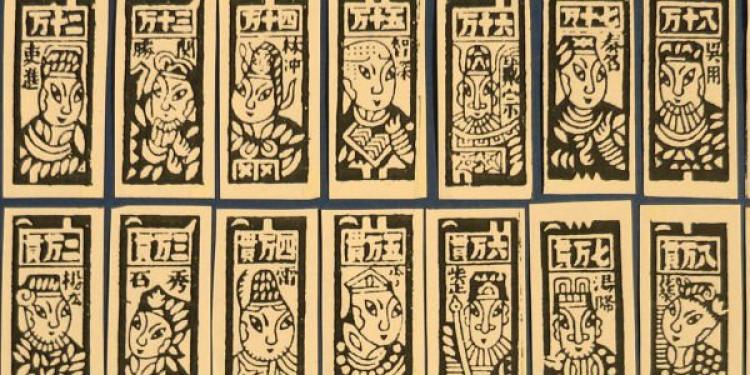Gambling games in ancient and medieval China: the invention of card games (Part 2)
Posted: May 4, 2017
Updated: October 4, 2017

The early production of paper contributed to the appearance of card games that revolutionized gambling games in ancient and medieval China.
It is widely held today among anthropologists that the first playing cards appeared in China in the end of the 9th century. Due to this invention the period that followed was one of expansion and commercialization of gambling games including cards. According to some the cards were used both, for playing the game and they were also considered to be the stake. Others developed the idea that the first packs of cards were just paper forms of Chinese domino games, report gambling news.
• Medieval China is the cradle of playing card games
• Khanhoo invented during the late Ming dynasty is ancestor of the rummy games
• The Ma Diao game, developed around 1200 AD became paradigmatic for many card games to come
It should be mentioned here that the cards used at this time were considerably different than the standard 52 card decks of today. Whatever the story of the early use of cards is it is certain that in the period of Northern Song (A.D. 960-1127), as well as during Southern Song dynasty (A.D. 1120), several games appeared that will make an enormous impact on the conception of games, in general, in China. The first one was a domino game called Xuan He which had a huge impact on the use of cards in gambling games. The second was the card game Ma Diao which became the basis for many card games played today.
The card games played in ancient and medieval China: Khanhoo
Khanhoo is a card game whose development dates back to the late Ming dynasty. It rules have changed considerably since its appearance, the most significant revision being the one by Emperor Kao Tsung in 1130 AD. The thus modified game is commonly held to be the ancestor of all rummy games. During the Ming dynasty period the game was called kanhu which means “watching the tiger”
As online gambling sites from the EU note, it was a multi-trick game where players try to take tricks with one or three cards with the latter composed of different types of melds. It is important to stress that by the late Qing dynasty, the rules changed considerably and it was no longer a trick-taking game but a draw-and-discard game. Other changes occurred during the 18th and 19th centuries due to the influence of games like Mòhú and Pènghú which are regarded as the ancestors to Mahjong.
Ma Diao
Ma Diao also known as Madiao, Ma Tiu or Ma Tiao dates back to the late imperial Chinese period when it was considered to be one of the most popular trick-taking gambling card game. There are some indications, such as those of the Korean poet Jang Hon (1759-1828) according to which the game dated back to the Yuan dynasty (1271-1368). In Chinese, mǎ means “horse” and diao means “hanged” or “lifted.” The name of the game comes from the fact that three players compete against the banker, like a horse raising one shoe (banker), with the other three remaining hooves on the ground (three players).It was also known, as online gambling sites in China note, as the game of Paper Tiger.
As it is the case with many other Chinese card games, the rules for Ma Diao also evolved during time. The deck for the game was recorded by Lu Rong in the 15th century and the later rules were applied by Pan Zhiheng and Feng Menglong in the early 17th century.The game has gained such popularity in Asia that it did not stay only within the borders of China but spread internationally. Thus the game was also known in Japan from at least 1791 and nearly in the same period spreaded to Korea where it is played with 40 cards and four players.












